Utmaningar och misstag som du bör undvika under din SCADA-uppgradering
Att uppgradera ett SCADA-system är en stor uppgift som innebär en hel del utmaningar. Även om fördelarna är uppenbara – bättre prestanda, ökad säkerhet och förbättrad integration – kan processen vara svår. Att förstå dessa utmaningar och undvika vanliga misstag är nyckeln till en lyckad uppgradering.
Detta är del 4 av en artikelserie i sex delar om att uppgradera SCADA-system. I den här serien förklarar vi varje steg i uppgraderingsprocessen i detalj, inklusive:
- Del 1: 7 varningstecken på att ditt SCADA-system behöver uppgraderas
- Del 2: 8 skäl att uppgradera ditt SCADA-system med AVEVA
- Del 3: Steg-för-steg-guide för att uppgradera ditt SCADA-system
- Del 4: Utmaningar och misstag som du bör undvika under din SCADA-uppgradering
- Del 5: Experttips för en lyckad uppgradering av SCADA-systemet
- Del 6: Utforska de olika typerna av AVEVA SCADA-lösningar
Med vår expertis som AVEVA Endorsed System Integrator kan vi hjälpa dig att hantera dessa utmaningar på ett smidigt sätt. I den här artikeln beskrivs de viktigaste utmaningarna och misstagen som du bör undvika under din SCADA-uppgradering.
1. Komplexa processer:
SCADA-uppgraderingar är komplexa och involverar många delar, som systemanpassning, hårdvaru- och mjukvaruintegration, datamigrering, testning och dokumentation. För företag utan erfarenhet av SCADA-uppgraderingar kan denna komplexitet kännas överväldigande.
För att hantera detta bör du skapa en detaljerad projektplan som beskriver varje steg och tilldelar ansvarsområden och tidslinjer. Att arbeta med erfarna proffs eller en betrodd SCADA-leverantör kan förenkla processen och säkerställa att den görs på rätt sätt.
2. Problem med nedtid:
Minimering av nedtid är ett stort problem vid SCADA-uppgraderingar. Industriell verksamhet är beroende av kontinuerlig övervakning, och driftstopp kan leda till förlorad produktivitet och ekonomiska förluster.
För att minska denna risk bör du planera in uppgraderingen under perioder med låg aktivitet, som helger eller underhållsfönster. Överväg att uppgradera i faser för att testa och justera mellan stegen. Noggrann planering kan bidra till att minska påverkan på verksamheten.
3. Riskhantering:
SCADA-uppgraderingar medför risker, till exempel dataförlust, integrationsproblem, buggar eller personalens motstånd mot nya system. Effektiv riskhantering är avgörande för att förebygga dessa problem.
Börja med en riskbedömning för att identifiera potentiella problem. Utveckla strategier för att hantera varje risk, som säkerhetskopiering av data för att undvika förlust eller extra utbildning av personalen. En gedigen riskhanteringsplan förbereder dig för utmaningar och minskar risken för allvarliga problem.
4. Tänk på kostnaderna:
SCADA-uppgraderingar, inklusive programvara, hårdvara, licenser, utbildning och arbetskostnader, kan vara kostsamma. Den höga initialkostnaden kan få företag att skjuta upp uppgraderingar och behålla föråldrade system.
Att behålla gamla system kan dock leda till högre långsiktiga kostnader i form av ökat underhåll, lägre effektivitet och säkerhetsrisker. Genom att noggrant budgetera och utforska finansieringsalternativ kan företag hantera uppgraderingskostnaden och dra nytta av långsiktiga besparingar.
5. Krav på expertis:
SCADA-uppgraderingar kräver specialkompetens, särskilt när det gäller att konfigurera och integrera systemet med befintlig infrastruktur. Att hantera uppgraderingen internt kan orsaka misstag och förseningar utan rätt expertis.
För att undvika detta bör du överväga att anlita experter eller samarbeta med en AVEVA Endorsed System Integrator som oss. Vi kan tillhandahålla den tekniska kunskap som krävs för att säkerställa en framgångsrik uppgradering.
6. Kompatibilitetsproblem:
7. Vanliga misstag att undvika:
- Dålig planering: Otillräcklig planering kan leda till oordning, förseningar och kostnadsöverskridanden. Ta fram en detaljerad projektplan som täcker alla aspekter av SCADA-uppgraderingen för att undvika dessa problem.
- Bristfällig involvering av intressenter: Att inte involvera viktiga intressenter kan leda till bristande stöd. Håll dem informerade och engagerade under hela processen för att säkerställa att systemet uppfyller allas behov.
- Ineffektiv kommunikation: Tydlig kommunikation är avgörande. Uppdatera regelbundet teammedlemmar, leverantörer och intressenter om framsteg, utmaningar och eventuella ändringar i planen.
- Ingen plan för riskreducering: SCADA-uppgraderingar är förenade med risker. Skapa en riskreduceringsplan för att hantera potentiella problem, inklusive backup-strategier om problem uppstår.
- Hoppa över testning: Att skynda på eller hoppa över testning kan orsaka problem senare. Testa systemet grundligt för att säkerställa att det fungerar som förväntat och integreras smidigt med din infrastruktur.
- Otillräcklig utbildning: Se till att all relevant personal, inklusive operatörer och IT-personal, får ordentlig utbildning om det nya systemet. Detta minskar antalet fel och hjälper användarna att känna sig bekväma med uppgraderingen.
- Ignorera support efter implementeringen: Efter uppgraderingen är löpande support avgörande. Sätt upp en supportplan med leverantörshjälp, regelbundna uppdateringar och en tydlig process för att hantera problem.
Slutsats:
Att uppgradera ett SCADA-system kan vara komplicerat, men om man förstår de vanligaste fallgroparna och undviker misstag blir resultatet lyckat. Korrekt planering, effektiv riskhantering och expertmedverkan är avgörande för att processen ska gå smidigt. Ett modernt, effektivt och säkert SCADA-system kommer att vara till stor nytta för ditt företag. Som AVEVA Endorsed System Integrator hjälper vi företag att uppgradera SCADA-system på ett säkert sätt.
Undvik fallgroparna vid SCADA-uppgraderingar. Kontakta oss, din pålitliga AVEVA Endorsed System Integrator, för expertvägledning och en smidig uppgraderingsprocess.
-
Broschyrer och guider
AVEVA white paper
White paper: Snabba på omställningen av din tillverkning med förbättrad HMI/SCADA
-
Broschyrer och guider
AVEVA infografik
Infografik: Uppkopplade arbetare och driftskontroll – får du ut tillräckligt av din gamla HMI/SCADA?
















